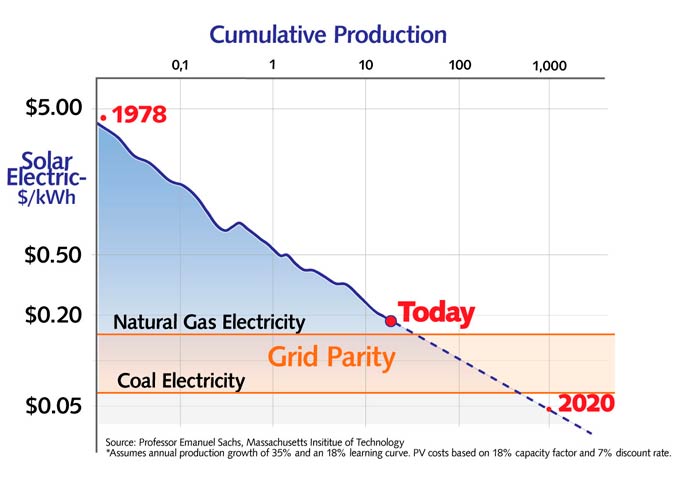1366 Technologies. Solar manufacturing for the 21st century.
If you know anything about the solar industry (which is likely more than I do), you've probably heard of 1366 Technologies.
Based in Lexington, MA and named after the solar constant (not a street address like 1369, one my favorite Cambridge coffeeshops), 1366 has developed a novel manufacturing technique to produce silicon wafers by casting (in other words, pouring molten silicon into a mold) as opposed to slicing from a large ingot. This new approach will eliminate silicon waste (generally 50% of silicon is wasted in the traditional manufacturing process) and reduce the cost of solar panels by 40%.
As US Secretary of State Steve Chu puts it, "1366 Technologies is a prime example of the innovative brilliance of Americans".
Let's just say, the DoE is a huge fan of 1366. Like General Compression, an energy storage startup I wrote about a couple weeks ago, 1366 received a $4 million grant from ARPA-E back in 2009. And, despite recent bankruptcy issues with government-aided renewable companies, the DoE issued a $150 million loan guarantee to 1366 just over a month ago. The government is clearly inspired and sees 1366's technology as innovative -- but also realistic. Jonathan Silver, head of the DoE's loan guarantee program says, "It's a process innovation, not a product innovation. They can produce silicon wafers with much less material and many fewer steps."
1366 Technologies has started commercialization of its solar-cell design and expects that innovations in silicon PV manufacturing will continue to reduce solar costs so that by 2020, solar is cheaper than coal.
Personally, I'm hopeful -- especially when you look at this graph and see that the cost of solar has dropped by a factor of 30 over the past 30 years:
Maybe I'm being naive? I admit, I have to learn more about solar economics.
Yesterday, I attended a Solar Energy101 lecture at MIT and one thing I learned was, that while the cost of the silicon wafer comprises over 50% of the cost of a finished PV module, it comprises only 20-25% of the total cost of solar! So even if we reduce costs of the wafer by 50%, we'll only reduce the total cost of solar by 10%.
What other costs are there besides the PV module, you may ask? A huge chunk (~50%) of the cost of solar is attributed to "post-manufacturing costs", including in large part, installation costs. Focusing on reducing installation costs might prove to have a much higher economic impact than researching new manufacturing techniques. But then again, installation is where we see major job creation in the US for the solar industry, since currently, most solar manufacturing is done outside of the US (mainly in China). So maybe we don't want to reduce installation costs. Because that would reduce job creation. Yikes. It's complicated! Any thoughts?
Regardless of my economics babbling, 1366 Technologies is undoubtedly leading the way towards cheaper and more efficient solar power - and who knows, maybe in the process, we can shift the solar manufacturing center of gravity back this way?


